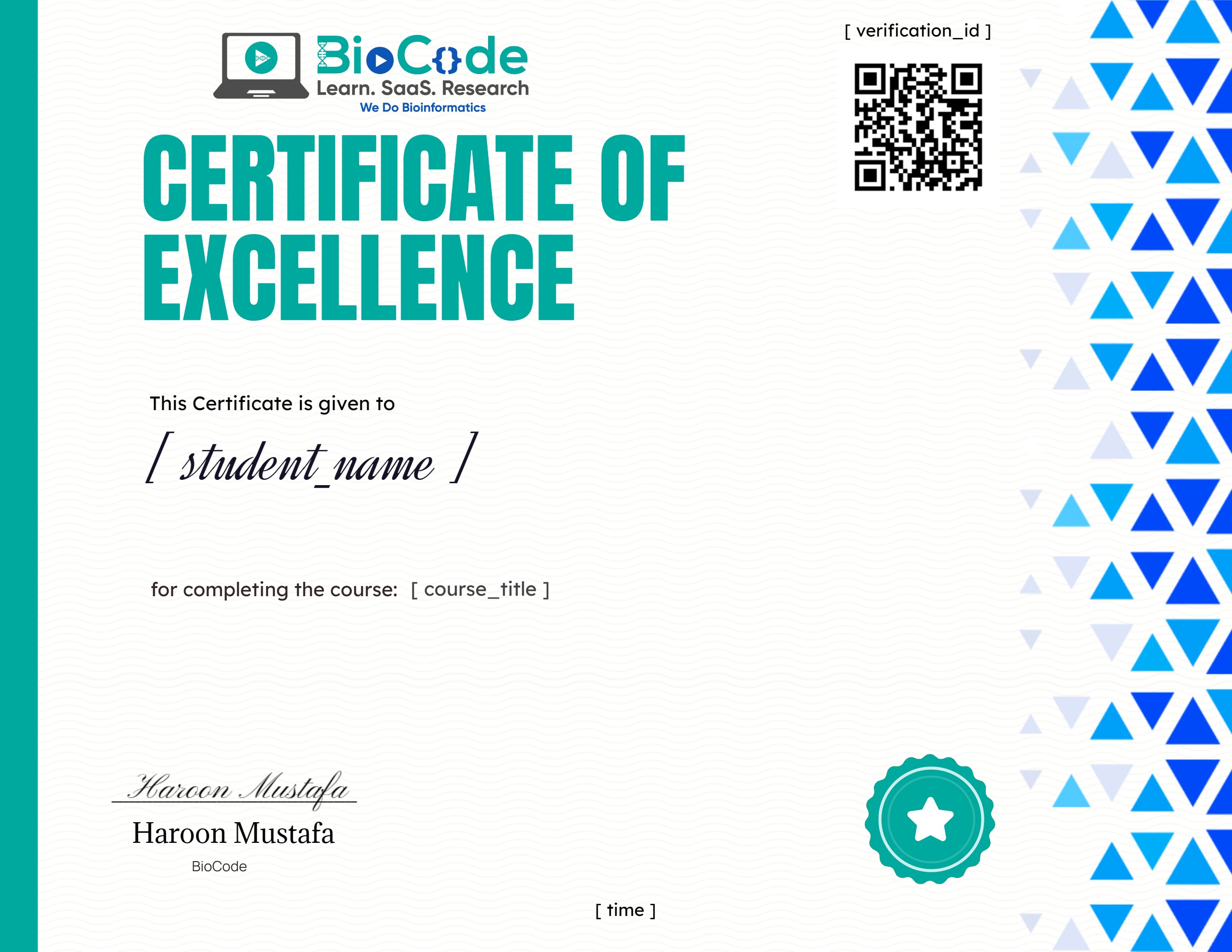Computational Drug Discovery and Design
About Course

Computational Drug Designing has become the go-to requirement for the researchers, scientists and pharmaceuticals who fight against fatal disease. BioCode (in partnership with BioAfri) is presenting an opportunity to learn Computational Drug Discovery and Design through an online workshop. This course is completely hands-on and you don’t need any prior Bioinformatics or immunoinformatics knowledge or skills for this course, we’ll take care of that and teach you the required topics.
Computational drug discovery is an effective strategy for accelerating and economizing drug discovery and development processes. Because of the dramatic increase in the availability of biological macromolecule and small molecule information, the applicability of computational drug discovery has been extended and broadly applied to nearly every stage in the drug discovery and development workflow, including target identification and validation, lead discovery and optimization and preclinical tests.
All the modules in this course are carefully crafted so you learn from the basics Computational Drug Discovery and Design to the advanced level. Efficient demonstrations of the tools, methodologies, algorithms and software suites that are utilized within Computational Drug Designing will help you learn how to start the Computational Drug Designing projects, identify leads, do Molecular Docking, predict and analyze the ADMET properties, predict 3D structures of proteins and much more.
This course will include the following sections:
Section 1: Role of Bioinformatics in Drug Design
Description: This section will focus on making sure that the students learn about how bioinformatics has evolved the drug designing process.
Learning Outcomes: Upon completion of this section, students will be able to:
- Explain The Role of Bioinformatics in Drug Discovery.
- Discuss the Efficiency of Bioinformatics Analysis in Drug Designing.
Section 2: Lead Identification
Description: This section will focus on making sure that the students learn about how the drug target is validated and how leads are identified in order to computational design a certain drug.
Learning Outcomes: Upon completion of this section, students will be able to:
- Perform Target Validation.
- Identify Lead Compounds.
Section 3: ADMET Properties
Description: This section will make sure that the students understand about the chemical ADMET (absorption, distribution, metabolism, excretion, and toxicity) properties and how these properties play crucial roles in drug discovery and development.
Learning Outcomes: Upon completion of this section, students will be able to:
- Describe ADMET Properties.
- Predict ADMET Properties
Section 4: Protein 3D Structure Prediction
Description: This section will focus on making sure that the students learn about how the 3D structure of protein is predicted and various tools that are used to perform 3D structure prediction.
Learning Outcomes: Upon completion of this section, students will be able to:
- Explain 3D Structure Prediction.
- Perform 3D Structure Prediction using MODELLER, Swiss Model.
- Perform Model Evaluation using WhatCheck, ERRAT, Verify3D, ProCheck, RAMPAGE.
- Perform 3D Structure Visualization using CHIMERA and PyMol.
Section 5: Molecular Docking
Description: This section will focus on making sure that the students learn about the concept of molecular docking and how it is performed using various available tools.
Learning Outcomes: Upon completion of this section, students will be able to:
- Explain Molecular Docking.
- Perform Molecular Docking using PyRx, AutoDock Vina 4.2, Discovery Studio+
Section 6: Reverse (Computational) Vaccinology & Immunoinformatics
Description: This section will focus on making sure that the students learn about the concept of reverse vaccinology and immunoinformatics.
Learning Outcomes: Upon completion of this section, students will be able to:
- Explain Reverse Vaccinology.
- Discuss Immunoinformatics.
Section 7: Drug Repurposing
Description: This section will focus on making sure that the students learn about the concept of drug repurposing in computational drug discovery.
Learning Outcomes: Upon completion of this section, students will be able to:
- Explain Drug Repurposing.
- Discuss the Benefits of Drug Repurposing.

Course Content
Module I: Bioinformatics: Role in Drug Design
-
56:36
-
Practical Workflows
08:57
Module II: Lead Identification
Module III: ADMET Properties
Module IV: Protein 3D Structure Prediction
Module V: Molecular Docking: A Powerful Tool for Structure Based Drug Design
Module VI: Molecular Docking Using Autodock 4.2
Module VII: PyMol and PyRx
Module VIII: Discovery Studio+
Module IX: Reverse (Computational) Vaccinology & Immunoinformatics
Module X: Drug Repurposing
Earn a certificate
Add this certificate to your resume to demonstrate your skills & increase your chances of getting noticed.

